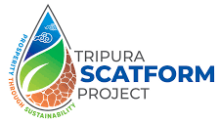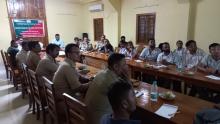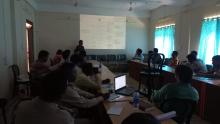
Sustainable Forest Management
Sustainable Forest Management component will enable to have
- 3Hi-tech Nurseries will be created at identified place.Area of each nursery will be at least 1.5ha with annual seedling production capacity of 5lakh. Objective of such nursery is to produce high quality seedlings, especially of species requiring intensive care(e.g., bamboo, cane), research on propagation methods of difficult but economically important plants and standardization of propagation methodology for indigenous rare, endangered and threatened species.
- 7 Central Nursery to improve existing Central Nurseries to produce a large number of seedlings with reliable quality for plantation under the project.
- 150 Decentralised People's Nurseries(DPNs) in area having difficult access. (I DPN per 3 JFMCs). Minimum area 0.25ha, minimum annual capacity 20,000 seedlings.)
- Plantation will be raised in 5 Plantation Models:
- Artificial Regeneration (AR) with mixed species: 1100 plants per hectare, in abandoned jhum sites where tree canopy density is less than 20% and where no teak stumps or seeds trees are available. The sites chosen must be within a distance of 5km from village. Need and choice of local villagers(JFMC) will be taken into account for deciding the species to be planted. Project Target- 5000 ha.
- Aided Natural Regeneration(ANR) with mixed species: 200 plants per hectare, in lower catchment where tree canopy density is less than 20% and where teak stumps or seed trees or bamboo rhizomes are not available on the site. The site chosen must be within a distance of 5 km village. Need and choice of local villagers (JFMC) will be taken into account for deciding the species to be planted. Project Target- 21,000 ha.
- Teak Plantation Management: 200 plants per hectare, in existing degraded teak plantations, where tree canopy density is more than 20% and where teak stumps or seed are available on the site. The site chosen must be within a distance of 5 km from village. Need and choice of local villagers(JFMC) will be taken into account for deciding the species to be planted. Project target - 15, 000 ha.
- Silvi-pastoral plantation: 400 seedlings per hectare, near villages / settlements, where tree canopy density is less than 20%. The site chosen must be within a distance of 2-3 km from village.Fodder need and choice of local villagers(JFMC)will be taken into account for deciding the species to be planted. Project target-1,000 ha.
- Filter strip (96km) & River bank Plantation (100 km): Filter strip will be developed on either side of streams/ chharas, in flat area (upto 15% slope allowed), next to agricultural land/eroded areas.(222 Bamboo plants, 222 cane plants and 333 trees seedling will be planted in three rows with cane row in the streamside, next bamboo and tree, total 666 plants per kilometer to be planted). River bank Plantation will be carried out on eroded banks vulnerable to erosion on either side of the streams/chharas. Existence of residential areas and agricultural land along the riverside is a pre-requisite for taking up riverbank plantation.
- Bandalling: A total of 222 nos of bandalling structures will be constructed on pilots basis near erosion prone banks with low heights. The sites will be near filter strips and riverbank plantations.Their effectiveness will be studied and based upon its results it may scaled up if required.







 Share this page
Share this page









